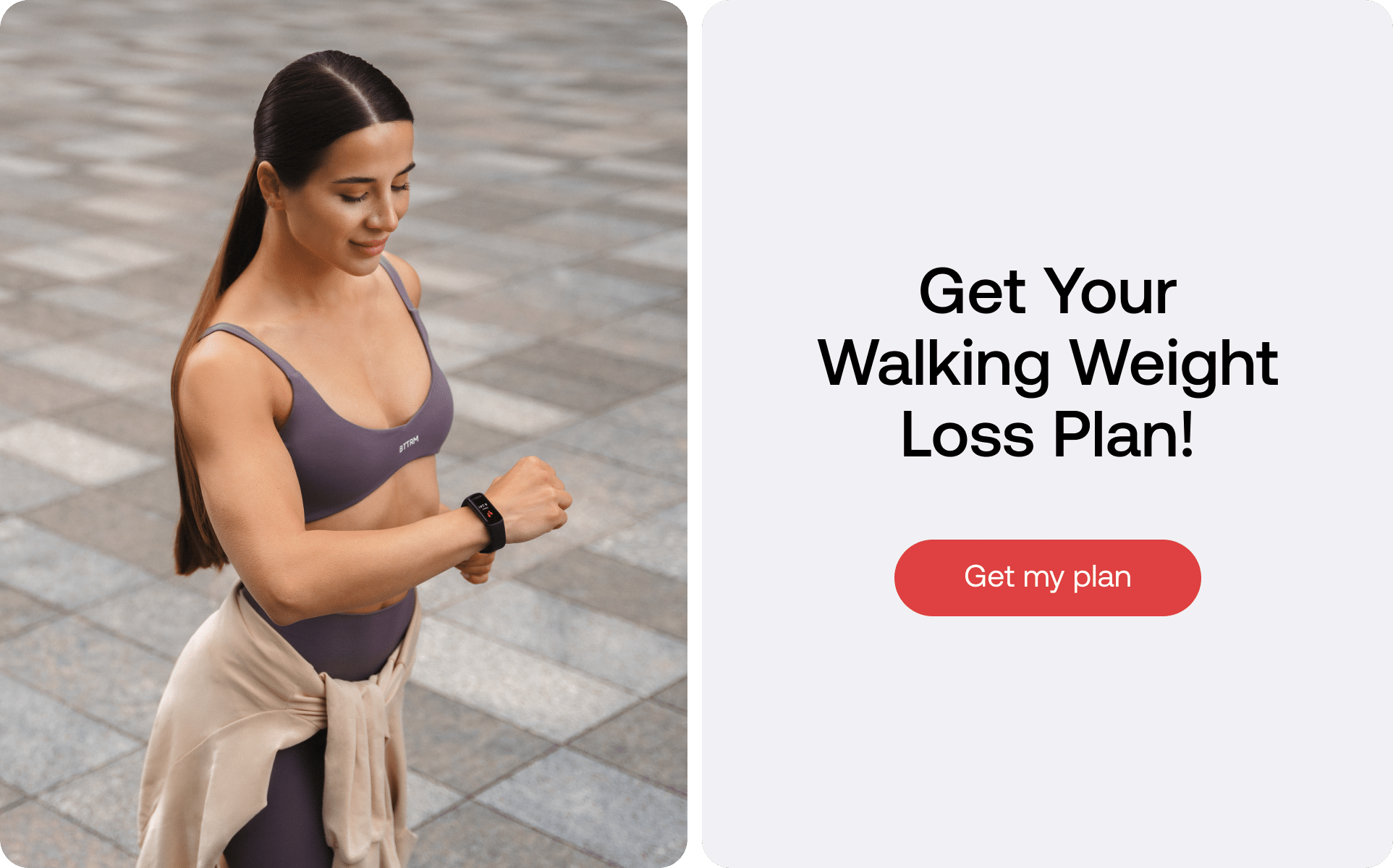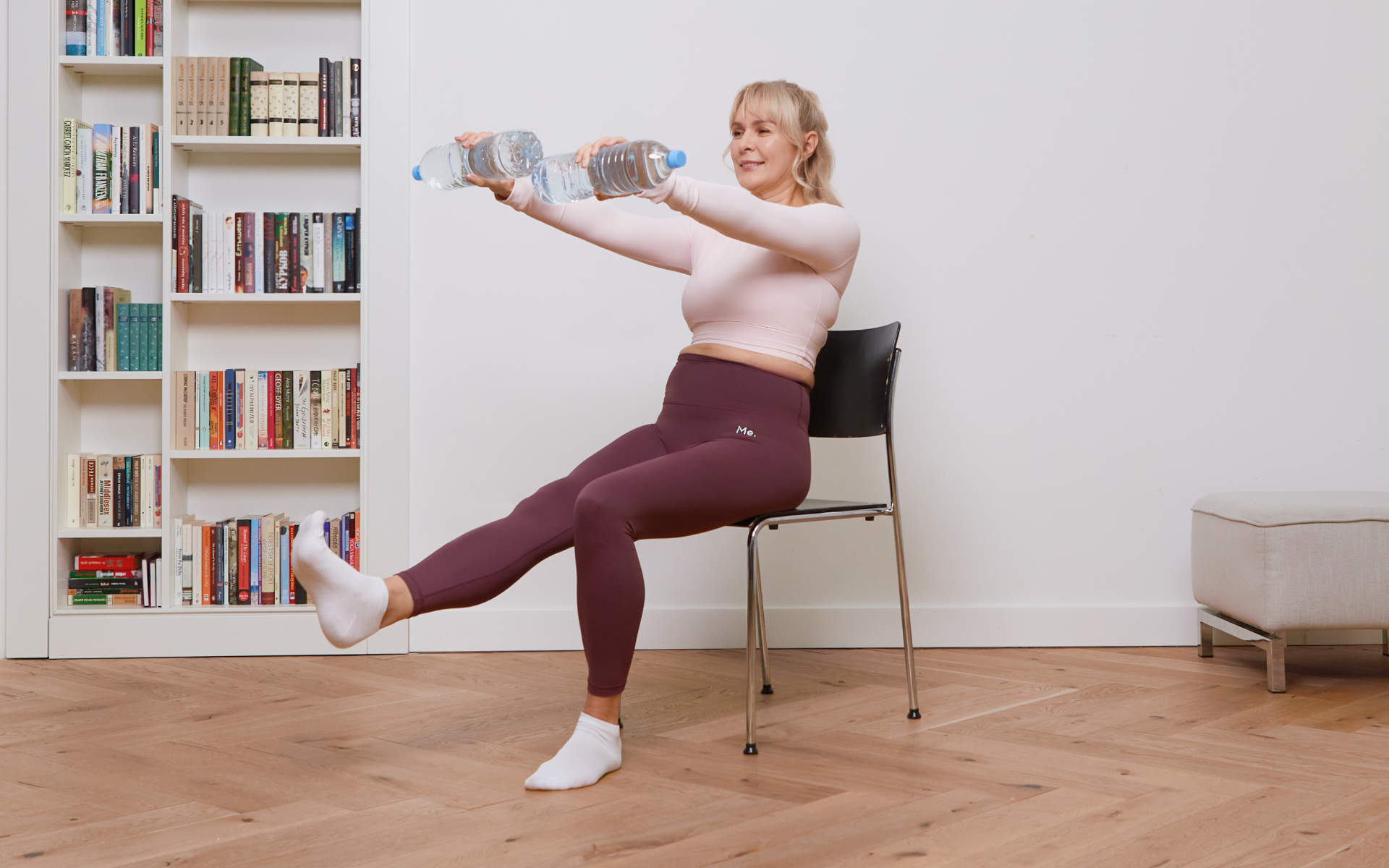A daily walk could do wonders for your body and mind. From boosting mood to improving heart health, the benefits of walking are numerous, but what about its potential as a weight-loss tool? Walking 3 miles a day could be a simple yet effective method to shed those extra pounds. It’s not only about the calories burned during the walk, but also about the ripple effects on your overall metabolism. Regular walking increases the metabolic rate, making it possible for your body to burn calories, even while at rest. This humble exercise is easy to incorporate into your routine and, as a bonus, doesn’t require any special equipment or gym membership. Plus, it’s an excellent way to explore your neighborhood, spend time in nature, and even catch up on your favorite podcasts or audiobooks. Let’s get into the specifics of how walking 3 miles a day can help you achieve your weight loss goals.
Is Walking 3 Miles Exercise?
Walking 3 miles does indeed qualify as exercise. Physical activity doesn’t have to be intense or prolonged to offer health benefits. Quite the contrary, even moderate activities such as walking can contribute significantly to your overall physical health.
When you walk you engage multiple muscle groups and your cardiovascular system, improving heart health and increasing your body’s endurance (2). Walking 3 miles a day, especially at a brisk pace, can burn a significant number of calories, which contributes to weight loss.
In addition, walking is a weight-bearing exercise, meaning it can help improve bone density and prevent osteoporosis. It also promotes better blood circulation, reducing risks of high blood pressure and diabetes (7).
So yes, not only is walking 3 miles bona fide exercise, but it’s also a highly beneficial one that promotes weight loss, cardiovascular health, and overall well being. It’s a simple, accessible, and effective way to stay fit and healthy.
Read More: 16 Benefits Of Full-Body Workouts: What Can A Compound, Full-Body Workout Do For You?
Can Walking 3 Miles A Day Help You Lose Weight?
Walking 3 miles a day can truly help you lose weight. Here’s how:
Calorie Burn
Walking burns calories, which is crucial for weight loss. The exact number of calories burned during a walk depends on several factors, including your weight and walking speed. However, generally speaking, walking 3 miles could burn anywhere from 200 to 300 calories (3).
Metabolism Boost
Regular physical activity, like walking, can increase your metabolic rate which means your body will continue to burn calories even when at rest. This contributes to a higher overall daily calorie burn, further supporting weight loss.
Muscle Preservation
Walking is a weight-bearing exercise, which helps preserve lean muscle mass. Maintaining this muscle is important as it increases your resting metabolic rate, allowing you to burn more calories throughout the day.
Cravings Reduction
Physical activities such as walking can help curb cravings for sugary snacks, which are often high in calories and low in nutritional value (1).
Sustainable Practice
Walking is a low-impact exercise that can be sustained in the long term. This makes it easier to maintain a regular exercise routine, which is key for lasting weight loss.
Belly Fat Reduction
While spot reduction isn’t possible, walking can help reduce overall body fat, including belly fat. This is beneficial as belly fat is often associated with various health risks.
Remember, while walking 3 miles a day can contribute to weight loss, it should be combined with a balanced diet for optimal results.
If you wish to free yourself from all the extra pounds that have been weighting you down for way too long, start using the BetterMe app and overhaul your entire life!
How Many Calories Will A 3-Mile Walk Burn?
A 3-mile walk can burn between 150 to 300 calories, depending on various factors.
The exact number of calories burned during a walk will vary greatly from person to person, due to several influencing factors:
Your Weight
The more you weigh, the more energy (calories) your body uses to move. Therefore, a heavier person tends to burn more calories walking the same distance, compared to someone who weighs less.
Walking Speed
The faster you walk, the more calories you burn. This is because your body uses more energy to move at a faster pace.
Terrain
Walking on an incline or rough terrain will increase the intensity of your walk, causing your body to use more energy and thus burn more calories.
Age And Sex
As we age, metabolic rate naturally slows down, meaning we burn fewer calories during physical activities. Note that men typically burn more calories than women because they usually have more muscle mass.
Walking Technique
Believe it or not, how you walk can also affect calorie burn. Maintaining good posture, swinging your arms, and taking longer strides can all increase the intensity of your walk and the number of calories burned.
How Many Calories Does A 30-Minute Walk Burn?
A 30-minute walk can burn anywhere from 80 to 140 calories, depending on the person’s weight and walking speed (7).
As a general rule of thumb, an adult weighing 155 pounds will burn around 100 calories during a 30-minute walk at 3 mph. This number increases to 150 calories if the pace is 4 mph.
Read More: Running 1 Mile Calories Burned And How To Maximize Results
How To Get The Most Out Of Your 3-Mile Walk?
You can maximize your weight loss potential by taking the following steps:
Maintain A Brisk Pace
Maintaining a brisk pace during your 3-mile walk is a key strategy to maximize the benefits of your exercise.
A brisk pace means that you’re walking faster than a casual stroll, but not so fast that you’re out of breath or unable to hold a conversation. This pace increases your heart rate and breathing, helping to improve cardiovascular fitness.
Walking at a brisk pace also burns more calories than a leisurely walk. It challenges your muscles and cardiovascular system more than a slow walk, leading to greater health benefits.
It’s important to note that “brisk” can mean different things for different people, depending on their current fitness level. For some, it might be a 15-minute mile, while for others, it could be a 20-minute mile. The key is to walk at a pace that feels challenging yet sustainable.
Incorporate Interval Training
Interval training is a method of exercise that involves alternating between high-intensity and low-intensity periods of activity.
When applied to walking this could mean switching between a brisk pace and a slower, more relaxed pace. This type of training can help increase your overall walking speed and endurance, making it an effective way to get the most out of your 3-mile walk.
In addition, interval training can also enhance the calorie-burning benefits of your walk. High-intensity periods push your body to work harder, thus burning more calories than steady-paced walking.
In addition, the variation in intensity keeps your body from adapting to a single pace, which can lead to greater fitness improvements over time. Remember to warm up before starting your intervals and cool down afterwards to prevent injury.
Use Proper Walking Form
Using proper walking form is essential for preventing injury and making your walk more efficient. When you walk, keep your head up and look forward, not down to your feet.
Your shoulders should be down and back, not hunched over. Swing your arms naturally and keep your abdominal muscles engaged to support your spine.
Also, make your footsteps roll from the heel to the toe. Try not to land flat-footed or on your toes as this can lead to discomfort or injury. Walking in this way helps to engage your muscles effectively and ensures that you’re getting the most out of your workout.
It would help to improve your balance and stability, which are crucial for maintaining a steady pace throughout your walk.
Walk On Varied Terrain
Walking on varied terrain can challenge different muscle groups and boost your calorie burn. For example, walking uphill can increase the intensity of your workout and target your glutes, hamstrings, and calves more than walking on flat ground.
In addition, walking on uneven surfaces like trails or grass can engage your core muscles and improve your balance. Please note, be sure to wear appropriate footwear to prevent slips or falls.
If you’re new to walking on varied terrain, start slow and gradually increase your pace as your fitness improves.
Add Weight, Like A Backpack Or Ankle Weights
Adding weight to your walk can increase the intensity of your workout and help you burn more calories. This can be done by wearing a weighted vest, carrying dumbbells, or wearing ankle weights.
However, it’s important to add weight gradually to avoid overloading your joints and causing injury.
Start with light weights and gradually increase as your strength and endurance improve. Also, ensure that the weights are distributed evenly across your body to maintain proper balance and posture.
Use Walking Poles
Using walking poles, also known as the Nordic walking technique, can help to engage your upper body muscles and increase your calorie burn. The poles add an element of resistance training to your walk, working your arms, shoulders, and back.
In addition to increasing your calorie burn, walking poles can also improve your balance and stability, especially when walking on uneven terrain. They can also take some of the load off your knees and legs, making your walk more comfortable if you have joint issues.
Include Uphill And Downhill Sections
Including uphill and downhill sections in your walk will increase the intensity of your workout and help you burn more calories. Walking uphill challenges your glutes, hamstrings, and calves, while walking downhill works your quads and shin muscles.
However, walking downhill can be hard on your knees, so it’s important to use proper form. Lean slightly back and take shorter steps to control your speed and protect your joints. When walking uphill, lean slightly forward and drive your knees up to maintain your momentum.
Try Backward Walking For Short Intervals
Backward walking, also known as retro walking, will help improve your balance, coordination, and muscular strength (5). Because it’s not a movement we typically do, it forces your muscles and brain to work differently, providing a new challenge.
That said, safety should be your top priority when trying backward walking. Choose a clear, flat path free from obstacles. Start with short intervals of backward walking, such as 30 seconds, and gradually increase as you become more comfortable and confident.
Listen To Motivating Music Or Podcasts
Listening to music or podcasts can make your walk more enjoyable and motivate you to walk longer. Choose music with a beat that matches your desired walking pace to help you maintain a steady rhythm.
Podcasts or audiobooks can also be a great choice, especially for longer walks. They can keep your mind engaged and make the time pass more quickly. Just make sure to keep the volume at a level where you can still hear traffic and other sounds for safety.
Stay Consistent With Your Routine
Consistency is key when it comes to getting the most out of your walking routine. Try to walk at the same time each day to make it a habit. Regular exercise can help to improve your cardiovascular health, boost your mood, and aid in weight management.
Even if you don’t have time for a full 3-mile walk, try to fit in shorter walks throughout the day. Every step counts, and being consistent with your routine can help you achieve your health and fitness goals.
Gradually Increase Your Walking Speed Over Time
As your fitness improves, try to gradually increase your walking speed. Walking faster can increase the intensity of your workout and help you burn more calories. It can also improve your cardiovascular fitness and endurance (2).
However, it’s important to increase your speed gradually to avoid injury. Start by including short intervals of faster walking in your routine, and gradually increase the length of these intervals as your fitness improves.
Pair Your Walk With A Healthy Diet
Pairing your walk with a healthy diet can help you achieve your health and fitness goals faster. Eating a balanced diet can provide the energy you need for your walk and aid in recovery afterwards.
Try to include a variety of fruits, vegetables, whole grains, lean proteins, and healthy fats in your diet.
Stay Hydrated Before, During, And After Your Walk
Staying hydrated is crucial when exercising, especially during your 3-mile walk. Dehydration can lead to fatigue, dizziness, and other symptoms that can affect your performance and safety (4).
Try to drink water before your walk to start off well-hydrated. If you’re walking for longer than an hour, or in hot weather, bring water with you and sip regularly during your walk. After your walk, drink more water to replace any fluids lost through sweat.
Incorporate Stretching Before And After Your Walk
Stretching before and after your walk can help improve your flexibility, increase your range of motion, and reduce your risk of injury (6). Dynamic stretches, which involve moving parts of your body through a full range of motion, are best before your walk to prepare your muscles for activity.
After your walk, cool down with some static stretches, where you hold a stretch for 15-30 seconds. This can help to lengthen your muscles and increase your flexibility, helping to prevent stiffness and soreness.
Wear Comfortable And Supportive Footwear
Wearing comfortable and supportive footwear is essential for a comfortable walk. Your shoes should have good arch support, a cushioned sole, and enough room for your toes to move.
Walking shoes are designed specifically for walking and can be a good choice. However, running shoes can also work well, as they’re designed for forward motion and have good cushioning. Avoid wearing worn-out shoes, as they may not provide adequate support and could lead to discomfort or injury.
Layer Clothing Appropriately For The Weather
Dressing appropriately for the weather can make your walk more comfortable. In colder weather, layer your clothing so you can remove layers as you warm up. Choose moisture-wicking fabrics for your inner layer to help keep sweat away from your skin.
In warmer weather, choose lightweight, breathable fabrics to help keep you cool. Don’t forget to apply sunscreen and wear a hat or sunglasses to protect yourself from the sun.
Track Your Progress Over Time
Tracking your progress can be a great motivator and help you see how far you’ve come. You can track your distance, time, speed, or even the number of steps you take.
Seeing improvements over time can boost your motivation and help you stay committed to your walking routine. Plus, it can help you set and achieve realistic goals, adding a sense of purpose and direction to your walks.
Frequently Asked Questions
How Many Calories Do You Burn By Walking 3 Miles An Hour?
The amount of calories burned depends on your weight, but a 150-pound person walking 3 miles an hour will typically burn about 200 calories.
Is Walking 3 Miles A Day Enough Exercise?
Yes, walking 3 miles a day can be enough exercise for general health benefits. However, if you want to lose weight and improve your fitness, you may need to increase your walking intensity or frequency.
Does Walking 3 Miles Burn The Same Calories As Running 3 Miles?
No, walking and running burn different amounts of calories. Generally speaking, running burns more calories than walking due to the increased intensity.
A 150-pound person will burn about 300 calories running 3 miles, compared to 200 calories walking 3 miles. However, the exact amount of calories burned will vary depending on your weight and pace.
The Bottom Line
Walking 3 miles a day can be an effective method to burn calories and promote weight loss. The key is consistency and gradually increasing your pace for maximum benefits.
DISCLAIMER:
This article is intended for general informational purposes only and does not serve to address individual circumstances. It is not a substitute for professional advice or help and should not be relied on for making any kind of decision-making. Any action taken as a direct or indirect result of the information in this article is entirely at your own risk and is your sole responsibility.
BetterMe, its content staff, and its medical advisors accept no responsibility for inaccuracies, errors, misstatements, inconsistencies, or omissions and specifically disclaim any liability, loss or risk, personal, professional or otherwise, which may be incurred as a consequence, directly or indirectly, of the use and/or application of any content.
You should always seek the advice of your physician or other qualified health provider with any questions you may have regarding a medical condition or your specific situation. Never disregard professional medical advice or delay seeking it because of BetterMe content. If you suspect or think you may have a medical emergency, call your doctor.
SOURCES:
- Acute Effects of Brisk Walking on Sugary Snack Cravings in Overweight People, Affect and Responses to a Manipulated Stress Situation and to a Sugary Snack Cue: A Crossover Study (2015, nih.gov)
- Benefits of walking (n.d., heartfoundation.org.au)
- Calories burned in 30 minutes for people of three different weights (2021, harvard.edu)
- Dehydration (2021, mayoclinic.org)
- Effectiveness of backward walking training on balance performance: A systematic review and meta-analysis (2019, sciencedirect.com)
- Stretching: Focus on flexibility (2022, mayoclinic.org)
- Walking for Exercise (2023, harvard.edu)














